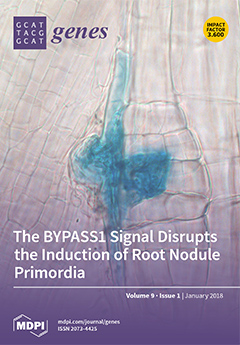In genome analysis,
k-mer-based comparison methods have become standard tools. However, even though they are able to deliver reliable results, other algorithms seem to work better in some cases. To improve
k-mer-based DNA sequence analysis and comparison, we successfully checked whether
[...] Read more.
In genome analysis,
k-mer-based comparison methods have become standard tools. However, even though they are able to deliver reliable results, other algorithms seem to work better in some cases. To improve
k-mer-based DNA sequence analysis and comparison, we successfully checked whether adding positional resolution is beneficial for finding and/or comparing interesting organizational structures. A simple but efficient algorithm for extracting and saving local
k-mer spectra (frequency distribution of
k-mers) was developed and used. The results were analyzed by including positional information based on visualizations as genomic maps and by applying basic vector correlation methods. This analysis was concentrated on small word lengths (1 ≤
k ≤ 4) on relatively small viral genomes of
Papillomaviridae and
Herpesviridae, while also checking its usability for larger sequences, namely human chromosome 2 and the homologous chromosomes (2A, 2B) of a chimpanzee. Using this alignment-free analysis, several regions with specific characteristics in
Papillomaviridae and
Herpesviridae formerly identified by independent, mostly alignment-based methods, were confirmed. Correlations between the
k-mer content and several genes in these genomes have been found, showing similarities between classified and unclassified viruses, which may be potentially useful for further taxonomic research. Furthermore, unknown
k-mer correlations in the genomes of Human Herpesviruses (HHVs), which are probably of major biological function, are found and described. Using the chromosomes of a chimpanzee and human that are currently known, identities between the species on every analyzed chromosome were reproduced. This demonstrates the feasibility of our approach for large data sets of complex genomes. Based on these results, we suggest
k-mer analysis with positional resolution as a method for closing a gap between the effectiveness of alignment-based methods (like NCBI BLAST) and the high pace of standard
k-mer analysis.
Full article






